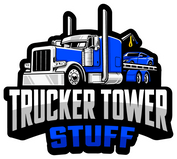
Reviving Up Your Towing Business: Effective Marketing Strategies for Success
In today's competitive towing industry, it's essential to stand out and expand your market share. Effective marketing can help your towing company not only survive but thrive. This blog post will explore a range of marketing strategies tailored to the unique challenges and opportunities in the towing business, encompassing both traditional and digital approaches. Let's dive in and discover actionable steps to improve your towing company's visibility and success.
1. Build a Strong Online Presence:
Website Optimization: Ensure your website is user-friendly, mobile-responsive, and optimized for search engines (SEO). This will help potential customers find you online.
Google My Business: Claim and optimize your Google My Business listing to appear in local search results when people are looking for towing services near them.
Online Reviews: Encourage satisfied customers to leave reviews on platforms like Google, Yelp, and Facebook. Positive reviews build trust and credibility.
2. Social Media Engagement:
Create Engaging Content: Regularly update your social media profiles with informative and engaging content, such as towing tips, safety advice, and customer testimonials.
Leverage Visuals: Use photos and videos to showcase your towing team, equipment, and successful recoveries. Visual content is highly shareable and can go viral.
Paid Advertising: Consider using targeted paid advertising on platforms like Facebook and Instagram to reach a broader audience.
3. Content Marketing:
Blogging: Maintain a blog on your website with informative articles related to towing, road safety, and vehicle maintenance. This positions your company as an industry expert.
Video Content: Create "how-to" towing videos or vlogs, which can be shared on YouTube and social media to educate and engage your audience.
4. Email Marketing:
Customer Database: Build an email list of customers and potential leads. Send out regular newsletters with updates, promotions, and safety tips to keep your audience engaged.
Personalization: Personalize your email content based on customer preferences and past interactions.
5. Traditional Marketing:
Local Advertising: Consider traditional advertising methods like radio, print, and local TV ads to reach an older demographic not as active online.
Fleet Branding: Ensure your towing vehicles are well-branded with your company name, logo, and contact information.
6. Community Engagement:
Sponsorships: Sponsor local events or sports teams to increase brand visibility in your community.
Safety Workshops: Host or participate in safety workshops, especially for young drivers or schools, to promote your towing services and road safety awareness.
7. Partnerships and Referral Programs:
Insurance Companies: Establish partnerships with local insurance companies for referrals. Being a preferred towing provider can bring a steady stream of business.
8. 24/7 Availability and Exceptional Service:
Customer Service: Provide exceptional customer service and be available 24/7 to build a reputation for reliability and responsiveness.
Conclusion:
In the competitive towing industry, a combination of digital and traditional marketing strategies can help you improve your business's visibility and market share. By optimizing your online presence, engaging with your community, and providing exceptional service, your towing company can rev up for success. Remember that consistency and adapting to changing customer needs are key to long-term growth in this dynamic industry. Start implementing these strategies today to steer your towing business toward success.
